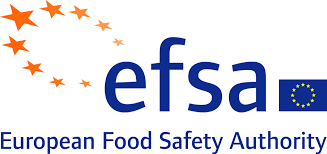Document type : news from the EFSA
Author: EFSA
Preview: Allowing more space, lowering maximum temperatures and reducing journey times are all necessary measures to improve the welfare of farm animals during transport, according to the EFSA recommendations published today. This view is found in the series of five scientific opinions provided to the European Commission to support the ongoing review of EU legislation on animal welfare - a key element of the EU's Farm to Fork (F2F) strategy.
This series of scientific Opinions covers small ruminants (sheep and goats), equidae (horses and donkeys), cattle (including calves), pigs, and animals transported in containers, including domestic birds (chickens, laying hens, turkeys, etc.) and rabbits. The Opinions identify the various impacts on animal welfare that occur during the different stages of transport, the hazards that may cause them, and the measurable animal welfare indicators required to assess them. For all species, fitness for transport is considered to be of the utmost importance.
Infographic: animal welfare during transport: free moving animals
Infographic: animal welfare during transport: animals in containers
"Good animal welfare practices not only reduce unnecessary suffering, they also help to improve animal health. They are therefore essential to the safety of the food chain, given the close links between animal welfare and health and foodborne diseases, in line with the"One health principal to which EFSA is committed," said Guilhem de Seze, Head of Risk Assessment at EFSA.
EFSA has defined quantitative thresholds for the temperatures maintained in transport vehicles as well as minimum space allowances for the animals. The Opinions also describe the emergence or development of various other parameters impacting animal welfare over time during transport, such as hunger, thirst and fatigue.
For example, for animals transported in containers (poultry and rabbits), EFSA recommends that the duration of the journey should be considered to be the entire time the animals spend in the containers and that, for day-old chicks, the only way to avoid welfare consequences is to transport fertilized eggs for hatching at the farm of destination.
The current EU legislation on the protection of animals during transport came into force in 2005. In the context of the F2F strategy EFSA's findings will form the basis for the European Commission's revision of the legislation, which will bring it in line with the latest scientific evidence, broaden its scope, make it easier to apply and, ultimately, ensure a higher level of animal welfare. The Commission's proposals are expected to be issued in the second half of 2023.
Public meeting on animal welfare
On September 26, EFSA will organize a public event at which it will present the results of its scientific opinions on animal transport and of its recently-published opinions on the welfare of farmed pigs. More information can be found here.
Publication leading to articles on September 2 2022 in:
- Euractiv: Bien-être animal : l’EFSA recommande des trajets plus courts et des températures plus basses pour le transport des animaux
- Le Monde: Températures maximales et temps de trajet: l’EFSA propose de nouvelles règles pour encadrer le transport d’animaux
- Sciences et Avenir : Transport d’animaux vivants·: l’UE tente de se réformer pour améliorer le bien-être animal




